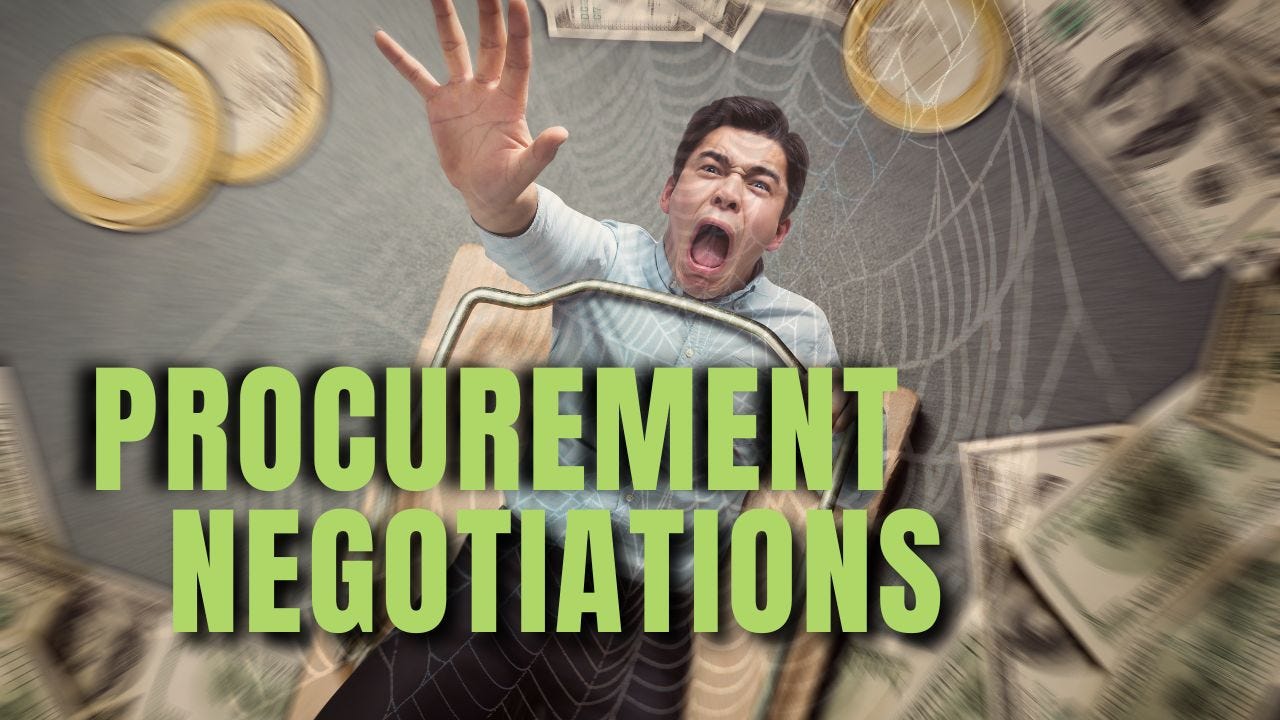Procurement Negotiations: The Big Mistake Procurement Leaders Make
By Razum Rajan
Procurement negotiations are at the core of unlocking value across supply chains. Yet, as we approach 2025, one critical mistake continues to plague procurement leaders, eroding value and diminishing competitive advantage: the relentless pursuit of cost reduction at the expense of holistic value creation.
The Cost-Only Mentality: A Dangerous Obsession
Procurement functions often fall into the trap of equating successful negotiations with the lowest price secured. While cost containment is undeniably important, it represents only a fragment of the value equation. This cost-centric approach disregards supplier innovation, long-term resilience, and strategic alignment, leaving organizations vulnerable to disruption and limiting potential growth.
Consider Boeing’s negotiations with suppliers during the development of the 787 Dreamliner. Driven by aggressive cost-cutting, Boeing outsourced key components to over 50 suppliers across the globe. The result? Severe production delays, quality control issues, and billions in additional costs to rectify missteps. Boeing’s case highlights the perils of prioritizing cost over collaboration and risk mitigation.
Beyond Price: The Value-Driven Negotiation Model
World-class procurement leaders understand that negotiation is not a zero-sum game. Instead, it is a partnership-building exercise designed to extract maximum value across multiple dimensions:
Innovation Incentivization: Leading firms like Apple and Tesla leverage procurement negotiations to drive supplier innovation. By engaging suppliers early and integrating their R&D capabilities, these companies co-develop cutting-edge products that solidify market leadership.
Resilience and Risk Mitigation: The COVID-19 pandemic exposed the fragility of global supply chains. Companies like Toyota, which negotiated long-term agreements prioritizing flexibility and dual-sourcing strategies, weathered disruptions better than competitors fixated solely on cost.
Sustainability Integration: Unilever, for example, embeds sustainability targets within procurement negotiations. Suppliers are incentivized to meet carbon reduction goals, contributing to Unilever’s broader ESG objectives while enhancing long-term supplier relationships.
The Power of Total Cost of Ownership (TCO)
A shift from unit price to Total Cost of Ownership (TCO) is essential to overcoming the cost-centric bias. TCO encapsulates not just the purchase price, but lifecycle costs, maintenance, operational risks, and end-of-life disposal. Companies like Siemens have adopted TCO frameworks to negotiate contracts that optimize product longevity and performance, ultimately reducing operational expenditures.
In contrast, organizations that neglect TCO often experience inflated downstream costs. A prime example is the healthcare industry, where hospitals focusing solely on upfront equipment costs overlook long-term service agreements, leading to increased repair expenses and operational downtime.
The Supplier Partnership Paradigm
Negotiation, when executed correctly, transforms suppliers from vendors to strategic partners. Microsoft’s procurement arm exemplifies this by fostering supplier ecosystems that align with corporate innovation and sustainability goals. Microsoft’s supplier diversity programs are not just social initiatives but are rooted in negotiations that deliver competitive advantage through varied supply bases and unique capabilities.
The Role of Data and Technology in Modern Negotiations
Data-driven negotiation is the hallmark of procurement in 2025. Leaders harness predictive analytics, AI, and machine learning to uncover hidden cost drivers, forecast supplier performance, and simulate negotiation scenarios.
Amazon, for instance, deploys AI-driven procurement platforms that analyze supplier bids and benchmark them against global market trends. This ensures that Amazon negotiates not just the lowest price, but the most advantageous value proposition for scalability and delivery precision.
Overcoming Internal Misalignment
One often-overlooked mistake in procurement negotiations is internal misalignment. Procurement leaders must synchronize their strategies with finance, operations, and R&D to ensure supplier agreements reflect the holistic needs of the organization. General Motors’ cross-functional negotiation teams are a testament to the power of internal collaboration. By involving engineering and design leaders in supplier negotiations, GM aligns supplier capabilities with product innovation, driving both cost efficiency and technological advancement.
The Procurement Leader’s New Mandate
The era of price-first negotiations is over.
Procurement leaders must adopt a multi-faceted, value-driven approach to negotiation that encompasses innovation, resilience, sustainability, and strategic alignment. The organizations that recognize this shift will unlock unprecedented value, while those that remain tethered to outdated cost-reduction paradigms will find themselves lagging behind.
In 2025 and beyond, the role of the procurement leader is not just to negotiate contracts—it is to architect ecosystems that fuel competitive advantage. The future belongs to those who negotiate not for the lowest price, but for the highest value.
Chief Procurement Officers, I’m talking to you. You own making procurement relevant. You own driving this agenda shift. You own this influence model. Take action to get procurement a seat at the table and get us off the menu for lunch.
You can get your department a seat at the table by being in the top 1%
If you are thinking of really building a compounding career and achieving rapid performance outcomes, CPSCM™ might be the right community of procurement leaders who can build value and competitive edge. With over 3000 procurement executives nailing their career bets inside the CPSCM™ membership experience, this is your tribe.
Be Your Best


